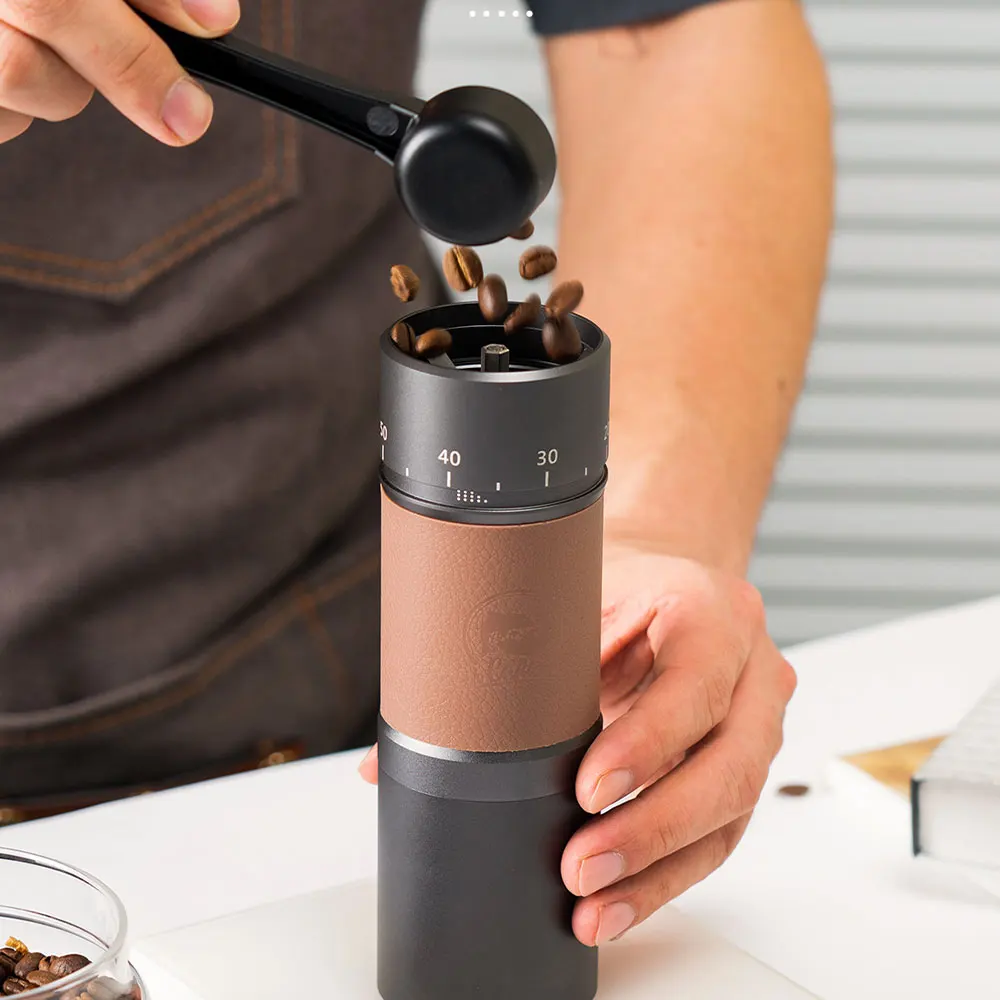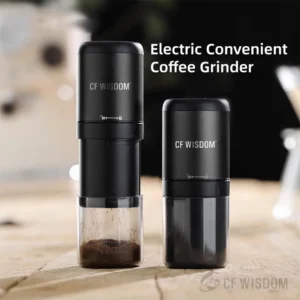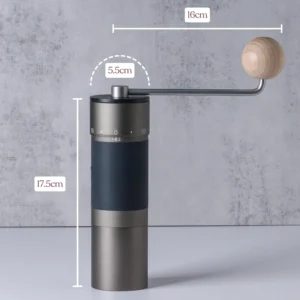Understanding the Fundamentals of Espresso Grind Size
When it comes to brewing exceptional espresso, the grind size is arguably the most critical factor that can make or break your shot. So how fine should you grind for espresso? The ideal espresso grind is fine—similar to powdered sugar or fine sand, but not quite as powdery as flour. When you rub it between your fingers, you should feel a gritty texture that’s noticeably finer than table salt but still has some particle definition.
A simple way to assess your grind is the “pinch test”: take a small amount between your thumb and forefinger and press gently. Properly ground espresso should clump slightly but still break apart with minimal pressure. This consistency creates the perfect balance of resistance when water is forced through under pressure.
Why is this specific grind size so crucial for espresso? Unlike other brewing methods, espresso relies on:
- High pressure (9 bars, or about 130 PSI)
- Brief contact time (20-30 seconds)
- Complete flavor extraction in that short window
The fine-tuning espresso grind size process is essential because even minor adjustments can dramatically affect your shot’s flavor, body, and crema. Getting this foundational element right sets you up for consistently excellent results.
Understanding the definitive guide espresso grind texture helps you recognize when your grounds are properly prepared. The visual and tactile assessment becomes second nature with practice, allowing you to make quick adjustments when needed. For home baristas serious about their espresso journey, investing in quality manual espresso grinders provides the precision control necessary for achieving this ideal consistency.
The Science Behind Espresso Grind Size
The physics behind espresso extraction explains why grind size is so critically important. When high-pressure water (typically 9 bars) meets coffee grounds, a complex interaction occurs in just 25-30 seconds. This brief encounter must extract 18-22% of the coffee’s soluble compounds—the sweet spot for balanced flavor.
Surface area is the key principle at work. Finer grinding dramatically increases the total surface area of the coffee particles exposed to water. More surface area means more efficient extraction in less time. Think of it like crushing a sugar cube versus leaving it whole—the crushed sugar dissolves much faster because there’s more surface for the water to contact.
Resistance dynamics are equally important. The coffee puck acts as a flow restrictor, with grind size directly controlling how quickly water passes through. Too coarse a grind creates insufficient resistance, resulting in under-extracted, watery espresso. Too fine, and the excessive resistance leads to over-extraction or complete blockage.
This delicate balance explains why how coffee grind affects pressure flow is crucial knowledge for any espresso enthusiast. The difference of just a few clicks on your grinder can transform a sour, under-extracted shot into a perfectly balanced one, or push it into bitter over-extraction territory.
For those seeking greater control over their espresso, precision manual grinders offer the fine adjustment capabilities necessary to find that perfect sweet spot for each coffee you brew.
Essential Tools for Precise Espresso Grinding
Creating the perfect espresso grind requires the right equipment. The most fundamental choice is between burr and blade grinders—and for espresso, this isn’t really a choice at all. Blade grinders chop beans randomly, producing inconsistent particle sizes that lead to uneven extraction. Burr grinders, on the other hand, crush beans between two precisely engineered surfaces, delivering consistent particle size that’s essential for proper espresso extraction.
When selecting an espresso-capable grinder, look for these key features:
- Stepless adjustment or very fine incremental steps
- High-quality burrs (ceramic or hardened steel)
- Minimal retention of grounds between uses
- Consistent particle size distribution
- Sturdy construction that remains stable during grinding
Supporting tools that enhance your grinding precision include:
- Digital scale (accurate to 0.1g) for consistent dosing
- Shot timer for tracking extraction
- Distribution tool for even puck preparation
- Small spray bottle for reducing static
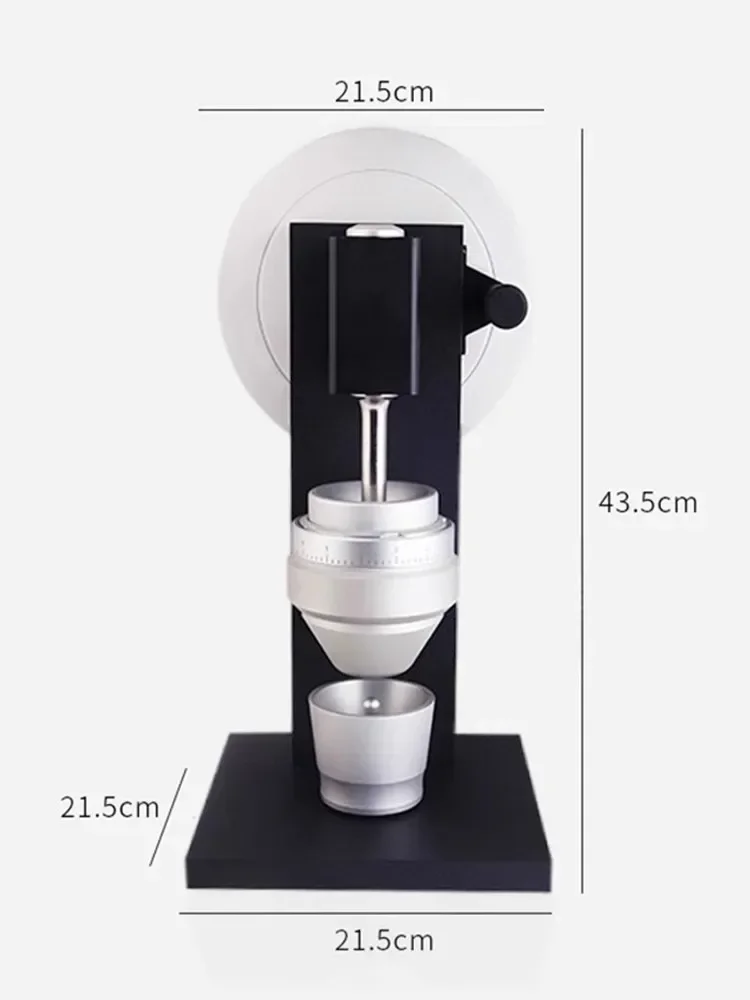
Understanding why burr grinders essential espresso preparation makes it clear that this isn’t an area to compromise. The quality of your grinder directly impacts shot consistency, with better grinders producing more uniform particles and fewer “fines” (dust-like particles that can clog filters and cause channeling).
For home baristas seeking precision without breaking the bank, Savor Suite’s collection of fine-adjustment hand grinders offers excellent options that provide the control necessary for exceptional espresso.
Step-by-Step Guide to Dialing In Your Espresso Grind
Dialing in your espresso grind is a methodical process that combines measurement, observation, and taste evaluation. Follow these steps to find your optimal grind setting:
Start with baseline parameters: Begin with 18g of coffee aiming for a 1:2 ratio (36g output) in 25-30 seconds. This provides a standard reference point.
Choose an initial grind setting: If your grinder has an espresso range, start in the middle. For new grinders without reference points, begin finer than you think necessary—it’s easier to adjust coarser than finer when you’re full of grounds.
Prepare and pull your shot: Distribute evenly, tamp with consistent pressure (about 30 pounds), and start your timer as the extraction begins.
Observe the flow pattern: Watch how the espresso emerges from the portafilter. Ideal flow starts with a few seconds delay, then develops into what baristas call a “mouse tail”—a steady, honey-like stream.
Time and weigh the output: Stop the shot when you reach your target weight (36g in our example), noting the total time.
Evaluate the taste: Regardless of timing, taste is the ultimate judge. Note whether the shot is sour (under-extracted), bitter (over-extracted), or balanced.
Make measured adjustments:
* If too fast/sour (under 20 seconds): Make your grind finer by 1-2 clicks or notches
* If too slow/bitter (over 35 seconds): Make your grind coarser by 1-2 clicks or notchesRepeat and refine: Make one adjustment at a time, pull another shot, and evaluate. Continue until you achieve the desired balance of flavor.
Understanding how adjusting grind size espresso shot timing affects your results helps you make intelligent adjustments rather than random changes. The goal isn’t to hit exact numbers but to find the setting that produces the most delicious espresso for your specific beans and equipment.
For those looking for precision in their espresso journey, Savor Suite offers excellent espresso coffee hand grinders designed specifically for the fine and consistent grinding that espresso demands.
Reading the Signs: Visual and Taste Indicators of Grind Size Issues
Learning to interpret the visual and taste cues of your espresso shots will help you quickly diagnose grind size problems. Here’s what to look for:
Visual Indicators During Extraction:
| Grind Issue | Visual Signs | Flow Pattern |
|---|---|---|
| Too Fine | Delayed start (>10 seconds), dark drips, sporadic flow | Drips slowly or barely flows; may sputter |
| Optimal | Brief delay (5-7 seconds), develops into steady stream | Consistent “mouse tail” flow, resembling warm honey |
| Too Coarse | Immediate flow, pale color, thin stream | “Gushing” extraction, watery flow, lacks resistance |
Crema Indicators:
- Too Fine: Dark, patchy crema that dissipates quickly or excessively thick, muddy crema
- Optimal: Golden-brown, persistent crema with tiger-striping and a smooth texture
- Too Coarse: Thin, pale crema that breaks apart quickly or barely forms
Taste Profile Indicators:
- Too Fine: Sharp bitterness, astringent mouthfeel, lingering unpleasant aftertaste
- Optimal: Balanced sweetness, appropriate acidity, full body, lingering pleasant finish
- Too Coarse: Pronounced sourness, thin body, watery mouthfeel, lack of complexity
Spent Puck Analysis:
After extraction, knock out your puck and observe its condition. An ideally ground puck should hold together, show even saturation, and have a relatively dry texture. Muddy, sloppy pucks often indicate too fine a grind, while crumbly, quickly disintegrating pucks suggest too coarse a grind.
The ability to troubleshoot espresso grind issues effectively comes with practice and attention to these details. By developing your observational skills, you’ll be able to make quick, accurate adjustments to your grind size based on both visual cues and taste evaluation.
Troubleshooting Common Espresso Problems Through Grind Adjustment
When your espresso shots aren’t turning out right, grind size adjustment is often the most effective solution. Here’s how to address common problems:
Rapid Extraction/Under-extraction
* Problem: Shot pulls too quickly (under 20 seconds), tastes sour, watery, and lacks body
* Solution: Make your grind finer in small increments until extraction slows to the target range. If you’re already at your grinder’s finest setting and still experiencing this, consider increasing your dose slightly (by 0.5-1g) as a temporary fix.
Slow Extraction/Machine Choking
* Problem: Shot drips extremely slowly or doesn’t flow at all
* Solution: Adjust your grind coarser in small increments until flow normalizes. If the machine is completely choked, make a more substantial adjustment for your next attempt, then fine-tune from there.
Persistent Sourness
* Problem: Despite decent flow rate, shots maintain a sharp, sour taste
* Solution: Try a slightly finer grind to increase extraction. If sourness persists, consider raising water temperature or trying a longer ratio (e.g., 1:2.5 instead of 1:2).
Persistent Bitterness
* Problem: Shots consistently taste bitter and harsh
* Solution: Use a slightly coarser grind to reduce over-extraction. If bitterness continues, try a slightly lower water temperature or shorter ratio (e.g., 1:1.5 instead of 1:2).
Channeling Problems
* Problem: Uneven extraction with spurting, blonde spots in flow, or holes in spent puck
* Solution: Ensure your distribution is even before tamping. A slightly coarser grind might help if the current grind is causing clumping. Proper puck preparation is as important as grind size here.
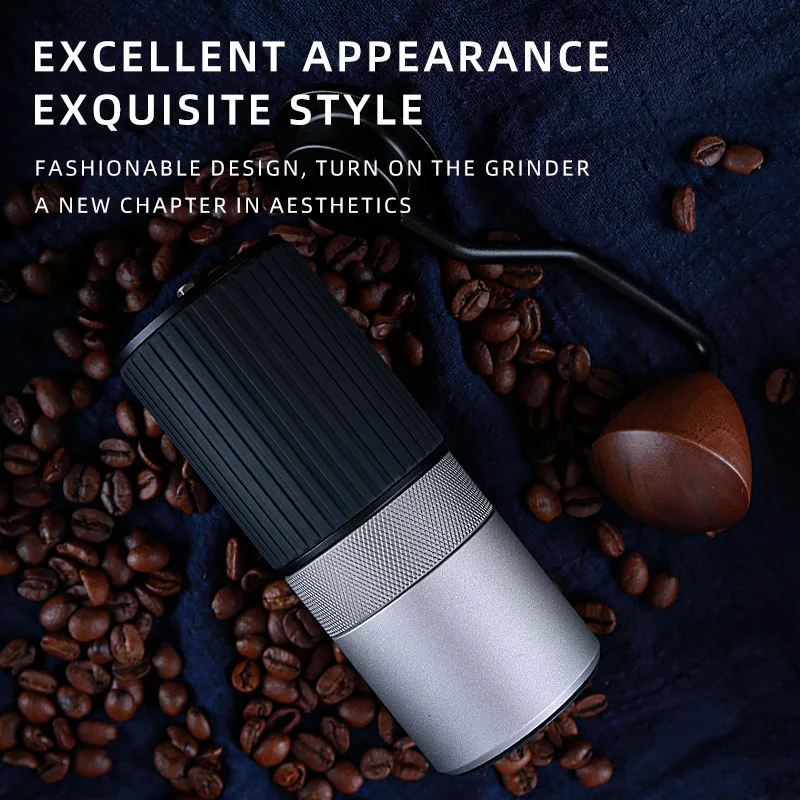
Poor Crema Quality
* Problem: Thin, quickly dissipating crema
* Solution: Try a slightly finer grind to increase extraction pressure and dissolved solids. Using fresher beans (1-2 weeks off roast) also significantly improves crema quality.
Understanding the definitive guide espresso grind size flavor relationship empowers you to make informed adjustments rather than random changes. Remember that grind size is just one variable—dose, tamping pressure, water temperature, and bean freshness all play important roles in your final result.
Fine Adjustment Hand Grinder, Precision Manual Grinder, Travel Coffee Grinder
Price range: $185.11 through $494.63 Select options This product has multiple variants. The options may be chosen on the product pageHand Burr Grinder, Hand Crank Coffee Grinder, Manual Espresso Grinder, Portable Coffee Grinder
Price range: $262.72 through $300.22 Select options This product has multiple variants. The options may be chosen on the product pageHand Burr Grinder, Manual Coffee Grinder Stainless Steel, Precision Manual Grinder
Price range: $183.64 through $187.52 Select options This product has multiple variants. The options may be chosen on the product pageManual Coffee Grinder Stainless Steel, Manual Espresso Grinder, Travel Coffee Grinder
Price range: $276.22 through $276.39 Select options This product has multiple variants. The options may be chosen on the product pageHand Crank Coffee Grinder, Manual Coffee Grinder for Espresso, Manual Coffee Grinder Stainless Steel
$349.15 Select options This product has multiple variants. The options may be chosen on the product page
Advanced Factors Influencing Your Ideal Espresso Grind
Beyond the basics, several advanced factors significantly impact your optimal espresso grind setting:
Bean Variables:
* Freshness: As beans age, they release CO2 and become less resistant to water flow. Typically, you’ll need to grind finer as beans age to maintain the same extraction time.
* Roast Level: Darker roasts are more brittle and extract more readily, generally requiring a coarser grind than lighter roasts.
* Origin and Processing: Different growing regions and processing methods produce beans with varying density and solubility, requiring grind adjustments.
* Variety: Arabica varieties often need slightly different treatment than Robusta beans.
Environmental Impacts:
* Humidity: Higher humidity can cause grounds to absorb moisture and clump, potentially requiring a coarser setting.
* Temperature: Grinders and beans at different temperatures may produce varying results—consistency is key.
* Elevation: Brewing at higher elevations affects boiling point and extraction, potentially requiring grind adjustments.
Equipment Considerations:
* Machine Pressure: Different machines operate at varying pressure levels—9 bars is standard, but some run higher or lower.
* Basket Type: Precision baskets (VST, IMS) typically require finer grinding than standard baskets.
* Portafilter Design: Pressurized vs. non-pressurized portafilters demand significantly different grind sizes.
* Water Flow Rate: Machine-specific flow characteristics may require grind adjustment.
Advanced Grinding Concepts:
* Particle Distribution: The range of particle sizes in your grind affects extraction—high-quality grinders produce more consistent particles.
* Fines Generation: Different grinders produce varying amounts of micro-particles that can either enhance body or lead to over-extraction.
* Burr Seasoning: New burrs perform differently than seasoned ones, typically requiring periodic adjustment during the break-in period.
Understanding espresso grind size light dark roasts differences helps you adapt to various coffee styles. Generally, lighter roasts benefit from finer grinding to assist extraction of their denser cellular structure, while darker roasts extract more readily and often need a slightly coarser setting.
For those serious about mastering these variables, Savor Suite’s selection of manual coffee grinders for espresso provides the precision control needed to adapt to these advanced factors.
Espresso Grind Size in Context: Comparison to Other Brewing Methods
Understanding how espresso grind compares to other brewing methods helps contextualize its unique requirements:
| Brewing Method | Relative Grind Size | Approximate Particle Size | Visual Comparison |
|---|---|---|---|
| Turkish Coffee | Extra Fine | 100-125 microns | Powdery like flour |
| Espresso | Fine | 200-400 microns | Powdered sugar/fine sand |
| Moka Pot | Medium-Fine | 400-600 microns | Between table salt and fine sand |
| Pour-Over | Medium | 600-800 microns | Table salt |
| Drip Coffee | Medium | 700-900 microns | Granulated sugar |
| French Press | Coarse | 1000+ microns | Sea salt/raw sugar |
This progression illustrates why grinds intended for other brewing methods fail when used for espresso. Pressure-brewing demands specific particle characteristics that other methods don’t require:
Surface Area Balance: Espresso requires enough surface area for rapid extraction but not so much that it creates excessive resistance.
Particle Cohesion: Espresso grounds must partially stick together to form a resistant puck that doesn’t develop channels under pressure.
Extraction Rate Control: The espresso grind creates just enough resistance to ensure water contact time falls within the critical 25-30 second window.
Using pour-over or drip grinds for espresso results in under-extracted shots that flow too quickly and taste sour. Conversely, using espresso grounds in a French press would produce over-extracted, bitter coffee with muddy sediment.
Mastering espresso grind adjustments requires understanding this context and developing the ability to make minute changes that accommodate your specific equipment and coffee selection.
Understanding Grinder Types and Their Impact on Espresso Quality
The grinder you choose significantly influences your espresso quality. Here’s how different grinder types affect your results:
Burr vs. Blade Grinders
Blade grinders use a spinning blade to chop beans randomly, creating inconsistent particle sizes that produce uneven extraction. This makes them fundamentally unsuitable for espresso preparation. Burr grinders crush beans between two precisely engineered surfaces, creating consistent particles that extract evenly under pressure—an absolute necessity for quality espresso.
Conical vs. Flat Burrs
Both designs can produce excellent espresso, but they have different characteristics:
* Conical burrs (one cone inside another) typically generate more “fines” (very small particles), which can add body but may increase bitterness
* Flat burrs (two parallel rings) often produce more uniform particle size, potentially yielding cleaner flavor profiles but sometimes with less body
Manual vs. Electric Grinders
While electric grinders offer convenience, quality manual grinders have several advantages for espresso:
* Reduced heat generation that preserves volatile compounds
* Often better grind consistency at lower price points
* Greater precision in adjustment for fine-tuning espresso extraction
* No electronic components to fail or degrade over time
Grinder Maintenance for Consistent Results
Regular cleaning and maintenance ensures consistent grinding:
* Clean burrs monthly or after particularly oily beans
* Check calibration periodically to ensure adjustment mechanism remains accurate
* Replace burrs when signs of dulling appear (typically after grinding 500-1000 lbs of coffee)
Precision grind adjustment espresso capability is particularly important as even tiny changes can significantly impact extraction quality. This is why many professional baristas prefer grinders with stepless adjustment mechanisms or very fine incremental steps when preparing espresso.
Is Your Espresso Grind Consistent? Testing Methods for Home Baristas
Consistency in your espresso grind is crucial for reproducible results. Here are several simple methods to evaluate your grinder’s performance:
Visual Inspection Test
1. Grind your normal espresso dose and spread it thinly on a dark surface
2. Under good lighting, look for obvious particle size variations
3. High-quality grinds should appear relatively uniform with minimal obvious large chunks or powder
The Clumping Assessment
1. Observe how the grounds exit your grinder
2. Minimal clumping indicates good consistency and low static
3. Excessive clumping can signal inconsistent particle size or high fine content
Simple Sieve Test
1. Use two fine mesh kitchen sieves of different sizes
2. Place the finer mesh below the coarser one
3. Add your grounds to the top sieve and gently shake
4. Measure what remains in each section—ideally, most grounds should remain in the middle sieve
5. Excessive powder in the bottom indicates too many fines; too much in the top suggests inconsistent grinding
Extraction Consistency Test
1. Pull several consecutive shots using identical parameters
2. Time each shot and weigh the output
3. Consistent times and weights (within 1-2 seconds and 1g) suggest good grind consistency
4. Wide variations indicate inconsistent grinding
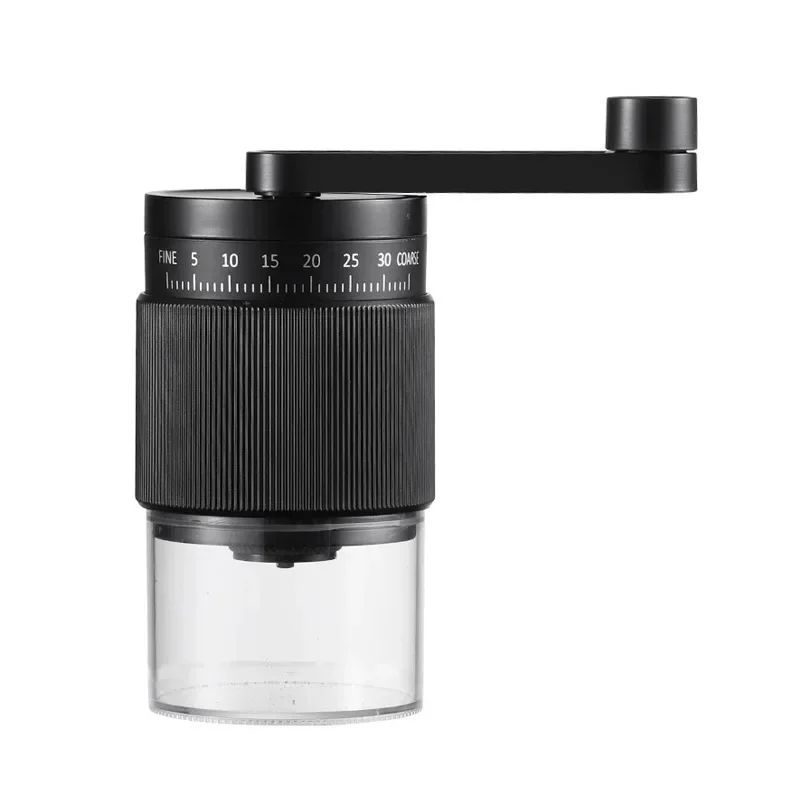
The Paper Towel Test
1. Spread a small amount of grounds on a paper towel
2. Press another paper towel on top
3. Look for the oil pattern—it should be relatively even
4. Inconsistent oil distribution suggests uneven particle size
Quality manual coffee grinders espresso preparation requires this consistency to achieve reproducible extraction. Investing in a grinder capable of uniform particle size is one of the most important decisions you’ll make on your espresso journey.
Frequently Asked Questions About Espresso Grind Size
Can I use pre-ground espresso coffee?
While possible, pre-ground coffee quickly loses freshness and may not match your specific machine’s requirements. For best results, grind fresh immediately before brewing. If you must use pre-ground, look for espresso-specific grinds and use within a week of opening the package.
How often should I adjust my grind?
You’ll need to adjust your grind when changing coffee beans, when beans age significantly (typically after 5-7 days), and when environmental conditions like humidity change noticeably. Many serious home baristas make minor adjustments daily to maintain optimal extraction.
Do I need different grinds for different espresso machines?
Yes. Different machines operate at varying pressure levels and have unique portafilter designs. A commercial machine may require a different grind than a home unit, and even similar machines may need slight adjustments based on their individual characteristics.
How much does grind size change as beans age?
As beans age, they typically require a finer grind to maintain the same extraction time. Fresh beans (1-5 days off roast) may need a coarser grind, while beans 7-14 days off roast often require progressively finer grinding. Beyond 3-4 weeks, significant adjustments may be necessary.
Can I use the same grind for pressurized vs. non-pressurized baskets?
No. Pressurized (dual-wall) baskets are designed to work with coarser grinds and create artificial pressure. Non-pressurized (single-wall) baskets require a finer grind to create proper resistance for extraction. The difference is substantial—often several notches on your grinder.
How fine is too fine for espresso?
If your grounds feel powdery like flour rather than gritty like fine sand, they’re likely too fine. Other indicators include choking the machine (no flow), extraction times beyond 35-40 seconds, and intensely bitter flavor profiles.
Adapting Your Espresso Grind for Different Bean Types
Different beans require specific grind adjustments to reach their full potential. Here’s how to adapt your approach based on bean characteristics:
Single-Origin vs. Blended Beans
Single-origin coffees often have more pronounced, distinctive flavor characteristics that may require specific grinding approaches. With fruity Ethiopian beans, a slightly finer grind often helps highlight acidity, while Brazilian coffees may perform better with a somewhat coarser setting to emphasize chocolate notes. Espresso blends are typically designed for balanced extraction and may require less adjustment.
Roast Profile Adjustments
* Light Roasts: Require finer grinding due to their denser structure and higher acidity. They’re less soluble, so finer particles help increase extraction.
* Medium Roasts: Represent the middle ground, often working well with your “standard” espresso setting.
* Dark Roasts: Need coarser grinding as they’re more brittle, soluble, and extract more readily. Too fine a grind easily leads to over-extraction and bitterness.
Processing Method Considerations
* Washed Coffees: Often have cleaner, brighter profiles that benefit from slightly finer grinding to enhance sweetness.
* Natural Processed: These typically fruitier, more complex beans can be more soluble and may require slightly coarser grinding to prevent overwhelming extraction.
* Honey/Pulped Natural: Usually fall between washed and natural in terms of optimal grind requirements.
The key to success is starting with your standard setting and making methodical adjustments based on taste. Record your findings for each bean type to build a personal reference guide that speeds up dialing in the next time you encounter similar coffees.
When and Why to Adjust Your Espresso Grind Beyond Initial Setup
Finding your ideal grind setting isn’t a one-time achievement but an ongoing process requiring regular attention:
Daily Adjustments
* Morning vs. afternoon temperature changes can affect extraction—machines run hotter after warmup
* Humidity fluctuations impact how grounds absorb moisture and pack in the portafilter
* Significant weather changes often necessitate grind adjustments
Seasonal Considerations
* Summer humidity typically requires slightly coarser grinding
* Winter’s dry air often necessitates finer grinding
* HVAC systems cycling on and off can create micro-climate changes affecting extraction
Bean Aging Timeline
* Days 1-3 after roasting: Beans still releasing significant CO2, may require coarser grinding
* Days 4-10: Peak flavor period, relatively stable grinding needs
* Days 11-21: Gradual adjustments toward finer grinding as beans become less resistant to water
* Beyond 3 weeks: More significant adjustments needed as beans continue to stale
Equipment Factors
* Burr wear over time gradually changes your grinder’s output
* Machine maintenance can alter pressure profiles, requiring grind adjustment
* Scale buildup affects temperature stability and flow rates
Tracking for Consistency
Keeping a simple coffee journal with your grind settings, shot times, and taste notes helps identify patterns. This practice accelerates your learning curve and helps you anticipate necessary adjustments rather than reacting to poor shots.
Remember that the perfect espresso grind is never static—it’s responsive to all these variables. Embracing this dynamic nature and making small, thoughtful adjustments is the hallmark of an experienced home barista.

